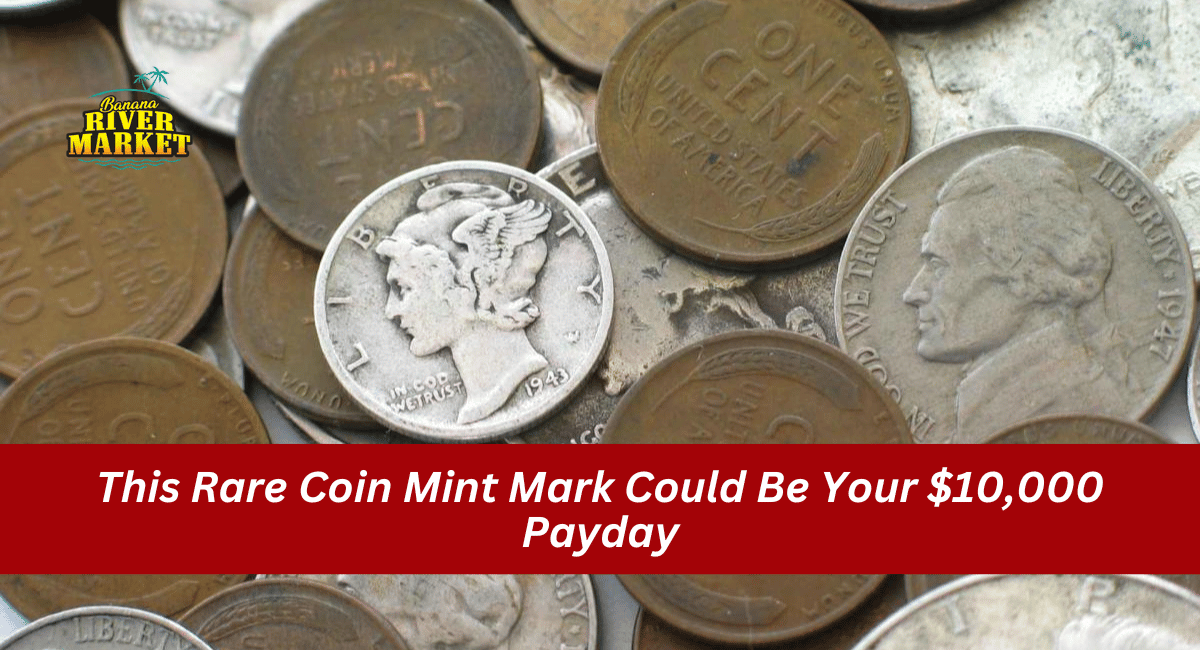When it comes to coin collecting, not all coins are created equal. A tiny detail known as a mint mark can drastically change a coin’s value, turning a seemingly ordinary piece of currency into a rare collectible worth thousands of dollars.
Mint marks indicate where a coin was produced, and certain errors or rare varieties can lead to impressive payouts. In this article, we’ll explore what mint marks are, highlight some rare examples, and provide tips on how to identify valuable coins in your collection.
What Are Mint Marks?
Mint marks are small letters stamped on U.S. coins that indicate which U.S. Mint facility produced the coin. Here are the primary mint marks you might encounter:
- D for Denver
- S for San Francisco
- P for Philadelphia
Most coins will have one of these marks, but the value can significantly increase if there are unique errors associated with them. Missing marks, misplaced marks, and doubled marks are just a few examples of how mint errors can elevate a coin’s status from mundane to magnificent.
Why Do Mint Marks Matter?
Mint marks play a crucial role in determining the rarity and value of a coin. A few factors contribute to this significance:
- Rarity: Some mint mark errors are extremely rare due to low production runs or mistakes made during the minting process.
- Collectibility: Collectors are always on the lookout for unique coins, making those with rare mint marks highly desirable.
- Investment Potential: Coins with unique features often appreciate in value over time, providing a potential return on investment.
Noteworthy Rare Mint Marks and Their Values
The table below summarizes a few rare coins known for their mint marks and their approximate values in the collector’s market:
| Coin | Mint Mark | Approximate Value |
|---|---|---|
| 1942-D Jefferson Nickel | D over D | $10,000+ |
| 1982 No-P Roosevelt Dime | No P | Up to $150,000 |
| 1970-S Washington Quarter | Doubled S | $10,000+ |
| 1943-P “3 over 2” Jefferson Nickel | P | Up to $585 |
These coins illustrate how the presence or absence of a mint mark can turn a standard coin into a treasure for collectors.
Factors Influencing the Value of Rare Mint Mark Coins
1. Rarity and Low Mintage
Coins with rare mint marks often come from limited production runs or are the result of minting errors. The 1942-D Jefferson Nickel featuring the “D over D” error is an excellent example. Due to its rarity, this coin can fetch prices exceeding $10,000.
2. Minting Errors
Errors during the minting process, like missing mint marks or doubled stamps, can enhance a coin’s value. The 1982 No-P Roosevelt Dime is a prime example. This coin lacks the “P” mark from the Philadelphia Mint, making it exceptionally rare. Only a few exist, and its value can reach as high as $150,000 for pristine specimens.
3. Condition and Grading
The condition of a coin significantly affects its value. Coins are graded on a scale from circulated to uncirculated (mint state). Mint-state coins, which show no signs of wear, typically command the highest prices. For instance, the 1970-S Washington Quarter with a doubled mint mark can be worth more than $10,000 if it is in excellent condition.
4. Historical Significance
Coins minted during significant historical events tend to be more valuable. For example, wartime coins like the 1943-P “3 over 2” Jefferson Nickel contain silver, enhancing their appeal. Collectors appreciate these coins not only for their rarity but also for their connection to history, with prices for well-preserved specimens reaching up to $585.
How to Identify Valuable Mint Marks
Spotting valuable mint marks requires careful examination. Here are some tips to help you identify potential treasures in your coin collection:
Use a Magnifier
A magnifying glass can help reveal subtle mint mark errors that are difficult to see with the naked eye.
Check Coin Catalogs
Resources such as the “Red Book” and various online coin databases list valuable mint mark varieties. These can be handy tools for collectors to identify rare coins.
Consult a Numismatist
For verification and professional grading, consider consulting a certified numismatist. They can help confirm a coin’s authenticity and provide an accurate valuation.
Conclusion
Rare mint marks can transform an everyday coin into a potential $10,000 payday. Understanding the significance of these tiny letters and the errors that can occur during minting can open the door to a world of collectible treasures.
Whether you’re a seasoned collector or just starting, keeping an eye out for these valuable mint marks can lead to exciting discoveries and possibly a lucrative investment.
FAQs
Some of the most valuable mint marks are those associated with errors, such as the 1982 No-P Roosevelt Dime and the 1942-D Jefferson Nickel.
Look for rare mint marks, minting errors, and the overall condition of the coin. Consulting coin catalogs or experts can also provide insights into value.
Not all coins with mint marks are valuable. The rarity, demand, and condition are crucial factors in determining a coin’s worth.
Store your coins in a cool, dry place. Consider using coin holders or albums to protect them from wear and tear.
You can sell rare coins through coin dealers, online marketplaces, or at coin shows. Ensure you get a fair appraisal before selling.
READ MORE: Discover 6 Rare Coins That Could Make You $10,000 Richer

